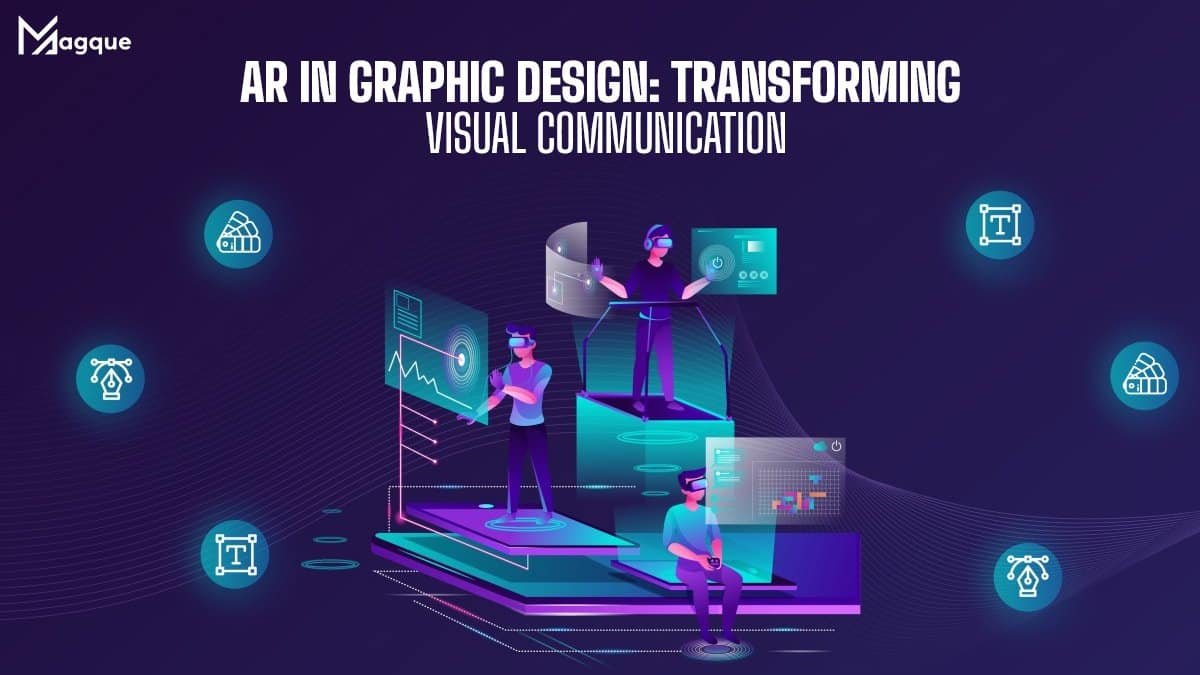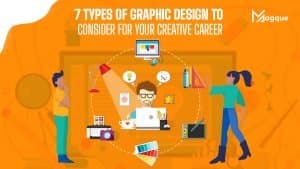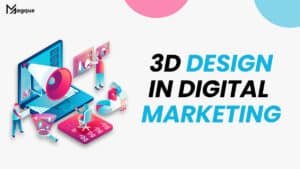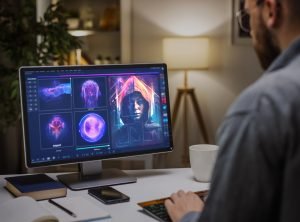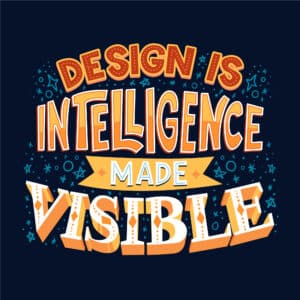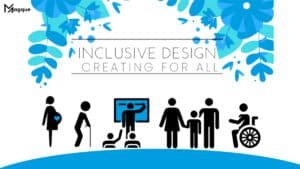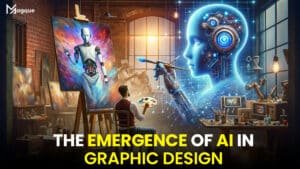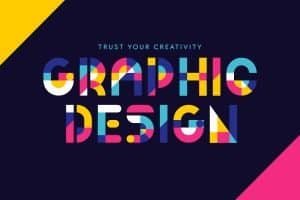Hey there, creative minds and tech enthusiasts! Have you ever wondered how augmented reality (AR) is shaking up the world of graphic design? Well, strap in because we’re diving deep into this innovative blend redefining visual communication’s boundaries. Welcome to the future, brought to you by Magque, where we unravel the magic of AR in graphic design.
So, what’s the big deal with AR, and why should you care as a designer or a curious mind? Imagine combining the vivid, imaginative world of graphic design with the interactive, immersive experiences AR technology offers. We’re talking about bringing designs to life, making them leap off the screen and interact with the natural world in real-time. Sounds like a sci-fi movie. But it’s happening here and now!
AR in graphic design isn’t just a fancy trick up the sleeve; it’s transforming how we convey messages and tell stories. It’s like suddenly having a 3D canvas where your art doesn’t just sit pretty—it engages, responds, and evolves based on how viewers interact. This isn’t just about being cool or trendy; it’s about creating more profound, meaningful connections between your work and your audience.
Let’s break it down a bit. Traditional graphic design has always been about communication—using images, typography, and colours to convey ideas. With AR, we’re taking this communication to another level. It’s like having a secret conversation with your audience where the visual cues can change and adapt. Imagine a poster for a concert that comes alive with music and movement when viewed through a smartphone or a business card that showcases the person’s portfolio in a mini 3D gallery when scanned. The possibilities are as limitless as your imagination.
You might be thinking, “That sounds amazing, but isn’t it complicated?” Here’s the kicker: it’s becoming more accessible every day. Tools and platforms are evolving, making it easier for designers to integrate AR into their work without needing to code or become tech wizards overnight. It’s all about creativity and pushing the boundaries of what’s possible.
But why should you jump on the AR bandwagon? For starters, it sets you apart in a crowded digital landscape. In a world where grabbing and holding attention is gold, AR offers a new, engaging way to interact with your audience. It’s not just about looking cool; it’s about adding value, enhancing user experience, and making your designs seen and experienced.
And let’s remember the fun factor. Designing with AR allows you to experiment and play in ways traditional mediums can’t match. It’s a chance to explore new dimensions of creativity and see your work in a whole new light.
So, where do you start? Begin by exploring AR apps and tools designed for graphic designers. Play around, experiment, and consider how to incorporate AR into your next project. Remember, the goal isn’t just to use AR for the sake of it but to use it as a tool to enhance your message and connect with your audience on a deeper level.
In conclusion, AR in graphic design is not just a trend; it’s the future of visual communication. It offers a new canvas for creativity, a novel way to engage with your audience, and an opportunity to stand out in a digital age. So, why embrace it and see where it can take your designs? The future is bright, and it’s augmented. Welcome to the revolution, courtesy of Magque. Let’s make magic happen together! And be sure to explore Magque, your go-to source for the latest and most intriguing updates in the realms of informative tips & reviews!
FAQs
Q1. What is AR in graphic design?
Augmented Reality (AR) in graphic design refers to integrating digital information with the user’s environment in real time. Unlike virtual reality, which creates an artificial environment, AR uses the existing environment and overlays new information on top of it. In graphic design, AR can bring static designs to life through interactive elements, animations, and 3D models, transforming how visual communication is perceived and experienced.
Q2. How does AR transform visual communication?
AR transforms visual communication by adding a layer of interactivity and immersion that traditional mediums cannot offer. It allows designers to create experiences where the audience can engage with the content dynamically and interactively. This can range from scanning a poster to see animated content to viewing a 3D model of a product in real space using a smartphone. AR makes visual communication not just something to be viewed but something to be experienced, enhancing the message and the engagement.
Q3. What tools do I need to start using AR in my graphic design projects?
To start incorporating AR in your graphic design projects, you’ll need software that allows you to create and integrate AR content. Popular tools include Adobe Aero, ARKit for iOS, ARCore for Android, and Unity with Vuforia. These platforms vary in complexity and capabilities, offering a range of functionalities from simple AR effects to complex interactive experiences. Choose one tool over another depending on your project’s needs and technical skills.
Q4. Is AR in graphic design only for big brands, or can small businesses and freelancers use it, too?
While AR might seem like a high-tech tool only accessible to big brands with significant budgets, it’s increasingly becoming accessible to small businesses and freelancers as well. Thanks to user-friendly AR creation tools and platforms, designers at all levels can now create AR experiences. This democratization of AR technology means small businesses can leverage AR for marketing, education, and engagement, offering innovative solutions that stand out in the market.
Q5. What are some creative ways to use AR in graphic design?
The possibilities with AR in graphic design are endless, limited only by imagination. Some creative uses include interactive business cards that display a portfolio or resume when scanned; educational posters that come to life with animations or 3D models to explain concepts; packaging that offers an interactive experience, such as showing how the product is made; and immersive advertisements that allow users to explore features of a product dynamically. These applications enhance the aesthetic value of the design and deepen the user’s engagement with the content.
Read Also This:- Reviewing Graphic Design Software for Beginners

